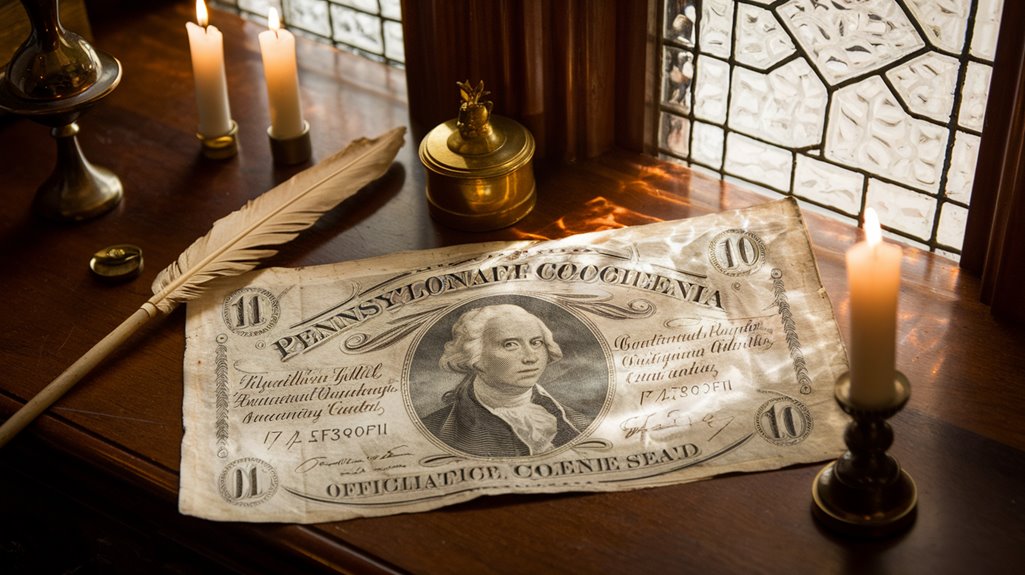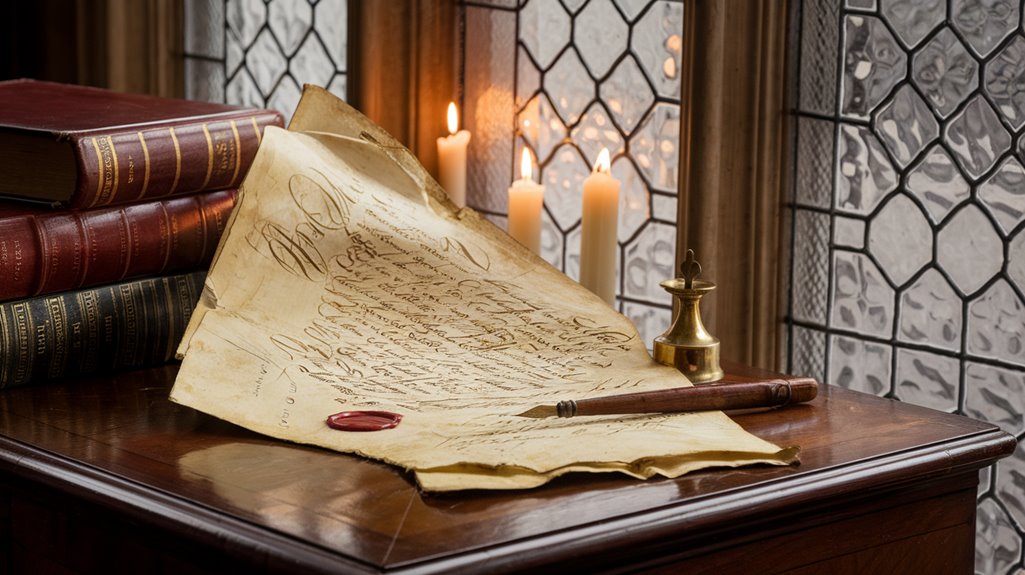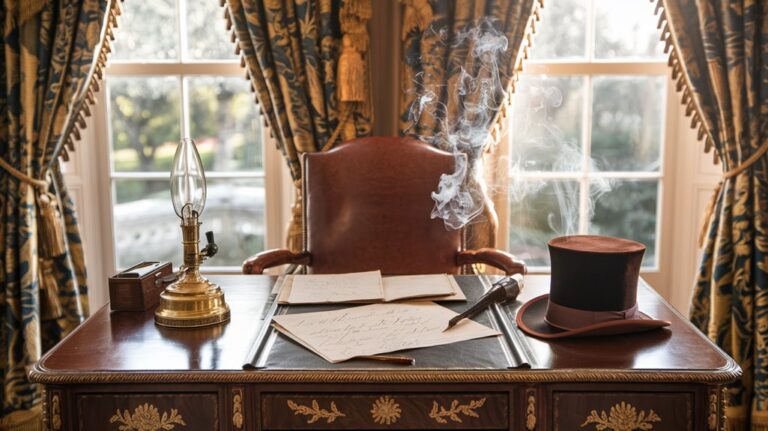2 Bills Predate the United States
Did you know that over 200 significant pieces of legislation shaped colonial America before the United States formally existed? Among these, you'll find two bills that particularly stand out: the Virginia Resolves of 1765 and the Currency Act of 1764. While you might think of American law as starting with the Constitution, these earlier bills reveal a complex struggle between colonial rights and British control. The story behind these two pieces of legislation holds surprising insights into how America's independence really began.
Colonial Legislative Origins

While the British Crown maintained ultimate authority over the American colonies, each colony operated with its own distinctive governmental structure. These early colonial governments formed the seedbed of democracy in America.
You'll find that colonial assemblies wielded significant power through their control of tax matters and budget decisions, even though governors could dissolve them at will. These assemblies also raised and equipped colonial militias, with members elected annually by property-owning citizens.
Governor powers weren't absolute, though. While they served as chief executives and could summon or dismiss assemblies, they often needed to negotiate with legislators to achieve their goals. The governor's council acted as the upper house chamber and provided advisory support to colonial leadership.
The assemblies effectively restricted governor powers by controlling money bills, demanding increased authority in exchange for military funding. This dynamic created a complex balance of power that would later influence America's governmental framework.
The Continental Congress Bills
Two essential bills predated the United States itself, emerging from the Continental Congress during the Revolutionary period.
During this pivotal time, the Continental Congress implemented significant financial measures to fund the war effort, most importantly by issuing paper money known as Continental dollars. The paper currency was designed to function as zero-coupon bonds, not as modern fiat money. The fifty-six deputies who gathered in Philadelphia made these crucial financial decisions.
You'll find it interesting that these financial instruments initially showed promise but faced severe challenges by 1779.
When Congress attempted to merge redemption periods for all dollars, public faith in the currency collapsed. The value of Continental dollars plummeted almost to zero due to failed fiscal policies.
By 1780, Congress tried to squeeze remaining value from these bills, but this effort only hastened their demise.
It wasn't until 1790 that the first Constitutional Congress finally addressed the outstanding redemption value as a debt to be liquidated.
British Legal Foundations
The lasting British legal system shaped American law long before the Continental dollars' rise and fall. You'll find its influence deeply embedded in America's legal framework, starting with the Act of Settlement in 1701, which established judicial independence as a cornerstone principle.
When you trace American legal roots, you'll discover key British documents like the Magna Carta and English Bill of Rights directly influenced the U.S. Constitution's protections. Organizations like the New England Legal Foundation continue to defend these essential free enterprise principles through strategic litigation.
The common law system, developed in medieval England, gave America its foundation of legal precedents through court decisions. Through institutions like the Court of Chancery and King's Bench, Britain provided the model for America's judicial structure. Modern institutions continue this tradition of legal evolution through legal research and reform, reflecting priorities established by organizations like the Law Foundation.
You're still seeing these influences today in American courts, where judges rely on precedent-based reasoning and uphold similar principles of individual liberty.
Early American Settlement Laws
As settlers pushed into new territories, American colonial law evolved beyond its British roots to address unique challenges of frontier life.
You'll find that while English common law provided the foundation, each colony developed distinct legal traditions based on their unique purposes and local conditions.
Land claims were particularly chaotic until the Land Ordinance of 1785 established a standardized surveying system.
Before then, you'd encounter overlapping claims and boundary disputes everywhere.
Different colonies tackled these challenges uniquely – Virginia prioritized economic profit, New England focused on religious principles, and Maryland embraced English law while protecting Catholic rights.
Courts in New England spent significant time managing community infrastructure through cases involving roads, schools, and taxation.
Many disputes were resolved through non-court mediation, with churches and merchant groups often serving as intermediaries between conflicting parties.
Pre-Revolutionary Legal Framework

Legal frameworks in colonial America took shape through a complex interplay of English tradition and local necessity.
You'll find that pre-revolutionary legal traditions varied across colonies, with Virginia closely following English common law while Massachusetts developed its own distinct code in 1636. Plymouth Colony exemplified colonial independence by establishing a self-declared government without royal charter authorization.
If you'd studied law during this period, you'd likely have encountered a shortage of properly trained lawyers, as most received their education either in England's Inns of Court or through self-study of English legal texts at home.
Colonial court systems reflected this blend of English influence and practical adaptation.
You'd notice that high demand and limited supply of lawyers led to increased fees and public distrust, prompting colonial governments to implement strict regulations based on parliamentary models.
First Steps Toward Independence
While frustrations with British rule had been mounting for years, formal steps toward independence began in 1774 when delegates from twelve colonies gathered in Philadelphia for the First Continental Congress.
You'll find that their initial approach focused on independence petitions, including a formal request to King George III to repeal the Coercive Acts.
 Continental Army under Washington's command.
Continental Army under Washington's command.
North Carolina led the way by passing the Halifax Resolves in April 1776, becoming the first colony to authorize its delegates to vote for independence.
Virginia followed suit in May 1776, setting the stage for Richard Henry Lee's vital motion in Congress to declare independence the following month.










